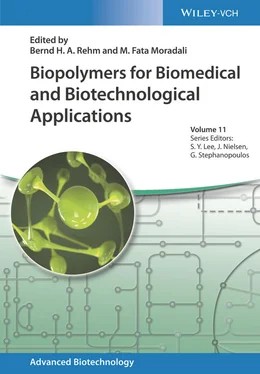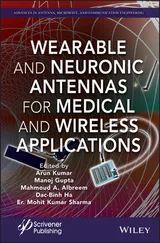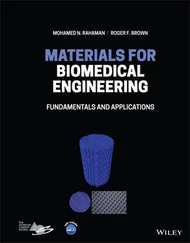Biopolymers for Biomedical and Biotechnological Applications
Здесь есть возможность читать онлайн «Biopolymers for Biomedical and Biotechnological Applications» — ознакомительный отрывок электронной книги совершенно бесплатно, а после прочтения отрывка купить полную версию. В некоторых случаях можно слушать аудио, скачать через торрент в формате fb2 и присутствует краткое содержание. Жанр: unrecognised, на английском языке. Описание произведения, (предисловие) а так же отзывы посетителей доступны на портале библиотеки ЛибКат.
- Название:Biopolymers for Biomedical and Biotechnological Applications
- Автор:
- Жанр:
- Год:неизвестен
- ISBN:нет данных
- Рейтинг книги:5 / 5. Голосов: 1
-
Избранное:Добавить в избранное
- Отзывы:
-
Ваша оценка:
- 100
- 1
- 2
- 3
- 4
- 5
Biopolymers for Biomedical and Biotechnological Applications: краткое содержание, описание и аннотация
Предлагаем к чтению аннотацию, описание, краткое содержание или предисловие (зависит от того, что написал сам автор книги «Biopolymers for Biomedical and Biotechnological Applications»). Если вы не нашли необходимую информацию о книге — напишите в комментариях, мы постараемся отыскать её.
Biopolymers for Biomedical and Biotechnological Applications — читать онлайн ознакомительный отрывок
Ниже представлен текст книги, разбитый по страницам. Система сохранения места последней прочитанной страницы, позволяет с удобством читать онлайн бесплатно книгу «Biopolymers for Biomedical and Biotechnological Applications», без необходимости каждый раз заново искать на чём Вы остановились. Поставьте закладку, и сможете в любой момент перейти на страницу, на которой закончили чтение.
Интервал:
Закладка:
The pallet of materials afforded by biopolymers allows an even broader spectrum of medical devices with huge potential to help mankind. The biocompatibility principles discussed in this chapter can be applied to biopolymers to address concerns with regard to their safety. Use of thoughtful risk‐based testing strategies can conservatively mitigate risk, allowing more of these devices to reach full maturity in development and arrive on the market.
References
1 1 Rebelo, R., Fernandes, M., and Fangueiro, R. (2017). Biopolymers in medical implants: a brief review. Procedia Engineering 200: 236–243.
2 2 Yadav, P., Yadav, H., Shah, V.G. et al. (2015). Biomedical biopolymers, their origin and evolution in biomedical sciences: a systematic review. Journal of Clinical and Diagnostic Research: JCDR 9 (9): ZE21.
3 3 Sahana, T. and Rekha, P. (2018). Biopolymers: applications in wound healing and skin tissue engineering. Molecular Biology Reports 45: 2857–2867.
4 4 Labet, M. and Thielemans, W. (2009). Synthesis of polycaprolactone: a review. Chemical Society Reviews 38 (12): 3484–3504. https://doi.org/10.1039/B820162P.
5 5 Chien, L.J. and Lee, C.K. (2007). Enhanced hyaluronic acid production in Bacillus subtilis by coexpressing bacterial hemoglobin. Biotechnology Progress 23 (5): 1017–1022.
6 6 Chien, L.J. and Lee, C.K. (2007). Hyaluronic acid production by recombinant Lactococcus lactis. Applied Microbiology and Biotechnology 77 (2): 339–346.
7 7 Liu, L., Wang, M., Du, G., and Chen, J. (2008). Enhanced hyaluronic acid production of Streptococcus zooepidemicus by an intermittent alkaline‐stress strategy. Letters in Applied Microbiology 46 (3): 383–388.
8 8 Helenius, G., Bäckdahl, H., Bodin, A. et al. (2006). In vivo biocompatibility of bacterial cellulose. Journal of Biomedical Materials Research Part A 76A (2): 431–438.
9 9 Hoenich, N.A. (2007). Cellulose for medical applications: past, present, and future. BioResources 1 (2): 270–280.
10 10 Rockwood, D.N., Preda, R.C., Yücel, T. et al. (2011). Materials fabrication from Bombyx mori silk fibroin. Nature Protocols 6 (10): 1612–1631.
11 11 Auras, R.A., Lim, L.‐T., Selke, S.E., and Tsuji, H. (2011). Poly(lactic Acid): Synthesis, Structures, Properties, Processing, and Applications. Wiley.
12 12 ISO/TS 21726:2019 (2016). Biological evaluation of medical devices – Application of the threshold of toxicological concern (TTC) for assessing biocompatibility of medical device constituents. Standardization IOf.
13 13 Kroes, R., Kleiner, J., and Renwick, A. (2005). The threshold of toxicological concern concept in risk assessment. Toxicological Sciences 86 (2): 226–230.
14 14 Munro, I., Renwick, A., and Danielewska‐Nikiel, B. (2008). The threshold of toxicological concern (TTC) in risk assessment. Toxicology Letters 180 (2): 151–156.
15 15 Hennes, E. (2012). An overview of values for the threshold of toxicological concern. Toxicology Letters 211 (3): 296–303.
16 16 Guideline IHT (2014). Assessment and control of DNA reactive (mutagenic) impurities in pharmaceuticals to limit potential carcinogenic risk. International Conference on Harmonization of Technical Requirements for Registration of Pharmaceuticals for Human Use (ICH), Geneva. Citeseer (31 May 2017). http://academy.gmp-compliance.org/guidemgr/files/M7_R1_ADDENDUM_STEP_4_2017_0331.PDF
17 17 European Food Safety Authority and World Health Organization (2016). Review of the Threshold of Toxicological Concern (TTC) Approach and Development of New TTC Decision Tree. EFSA Supporting publication 2016:EN‐1006. https://efsa.onlinelibrary.wiley.com/doi/pdf/10.2903/sp.efsa.2016.EN-1006
18 18 Cramer, G., Ford, R., and Hall, R. (1976). Estimation of toxic hazard – a decision tree approach. Food and Cosmetics Toxicology 16 (3): 255–276.
19 19 Munro, I.C., Ford, R.A., Kennepohl, E., and Sprenger, J. (1996). Correlation of structural class with no‐observed‐effect levels: a proposal for establishing a threshold of concern. Food and Chemical Toxicology 34 (9): 829–867.
20 20 Weng, W., Song, S., Cao, L. et al. (2014). A comparative study of bioartificial bone tissue poly‐l‐lactic acid/polycaprolactone and PLLA scaffolds applied in bone regeneration. Journal of Nanomaterials 2014: 236.
2 Advanced Microbial Polysaccharides
Filomena Freitas1, Cristiana A.V. Torres1, Diana Araújo1, Inês Farinha1,2, João R. Pereira1, Patrícia Concórdio‐Reis1, and Maria A.M. Reis1
1 UCIBIO‐REQUIMTE, Chemistry Department, Faculty of Sciences and Technology, Universidade Nova de Lisboa, Campus da Caparica, Caparica, 2829‐516, Portugal
2 73100 Lda., Rua Ivone Silva nº6 4ºpiso, 1050‐124 Lisboa, Portugal
2.1 Introduction
Microbial polysaccharides are high molecular weight (Mw) carbohydrate polymers produced by microorganisms, namely, bacteria, fungi, yeast, and microalgae [1,3]. They include intracellular polysaccharides that are accumulated in the cytoplasm of the cells as carbon and energy reserves (e.g. glycogen), cell‐wall polysaccharides that contribute to the cells' structural stability (e.g. chitin), and extracellular polysaccharides that are secreted by the cells, forming either a capsule that remains associated with the cell surface (capsular polysaccharides [CPS]) or a slime that is loosely bound to the cell surface (exopolysaccharides [EPS]) [2,4]. Of the last type, CPS are mostly associated with the pathogenicity of bacteria and virulence‐promoting factors [5], while EPS have been proposed to provide protection against environmental stress, cell adherence to surfaces, and carbon or water storage reserves [6].
Polysaccharides can be used into two main areas of application: (i) as structuring agents, based on their ability to form polymeric structures, such as films, gels, emulsions, microparticles, and nanoparticles, and (ii) as biological active materials/compounds that can be used for the development of novel pharmaceutical drugs or replace some of the currently used products [7,8]. Other applications include their use as sources of high‐value monomers, such as rare sugars (e.g. fucose, rhamnose, ribose, glucuronic acid, etc.), to generate oligosaccharides (e.g. galactooligosaccharides, fucooligosaccharides) that can be used in nutraceuticals [9].
This chapter starts with a brief overview on microbial polysaccharide diversity in terms of functional properties and their main areas of application ( Section 2.2), followed by a more detailed analysis of the currently more relevant and emerging areas ( Sections 2.3– 2.7).
2.2 Functional Properties and Applications of Microbial Polysaccharides
The main components of microbial polysaccharides are carbohydrates. Glucose, galactose, and mannose are the most common monomers, but other neutral sugars such as rhamnose, arabinose, and fucose and some uronic acids and amino sugars are also frequently found in such biopolymers. In addition to carbohydrates, microbial polysaccharides may also contain several organic acyl substituents in their molecular chains, such as ester‐linked groups and pyruvate ketals [4,10,11]. Given this diversity of polysaccharides' components that may include different sugar monomers as well as several noncarbohydrate groups, there is a wide range of possible molecular structures for these macromolecules. Consequently, microbial polysaccharides can display distinct physical and chemical properties.
The possible multiple combinations of monomeric units in polysaccharide molecules, along with the stereospecificity of glycosidic linkages (α or β anomers), lead to very complex chemical structures ranging from linear homopolysaccharides to highly branched heteropolysaccharides. Molecular mass distribution, chemical composition, and structure, namely, the presence of ionizable groups that confer the polysaccharides a polyelectrolyte behavior, greatly affect their properties, as well as the nature and number of intra‐/intermolecular interactions. Moreover, the properties of polysaccharides may be altered using mixtures with other components, for example, by blending with other polymers or adding salts and crosslinking agents.
Читать дальшеИнтервал:
Закладка:
Похожие книги на «Biopolymers for Biomedical and Biotechnological Applications»
Представляем Вашему вниманию похожие книги на «Biopolymers for Biomedical and Biotechnological Applications» списком для выбора. Мы отобрали схожую по названию и смыслу литературу в надежде предоставить читателям больше вариантов отыскать новые, интересные, ещё непрочитанные произведения.
Обсуждение, отзывы о книге «Biopolymers for Biomedical and Biotechnological Applications» и просто собственные мнения читателей. Оставьте ваши комментарии, напишите, что Вы думаете о произведении, его смысле или главных героях. Укажите что конкретно понравилось, а что нет, и почему Вы так считаете.












